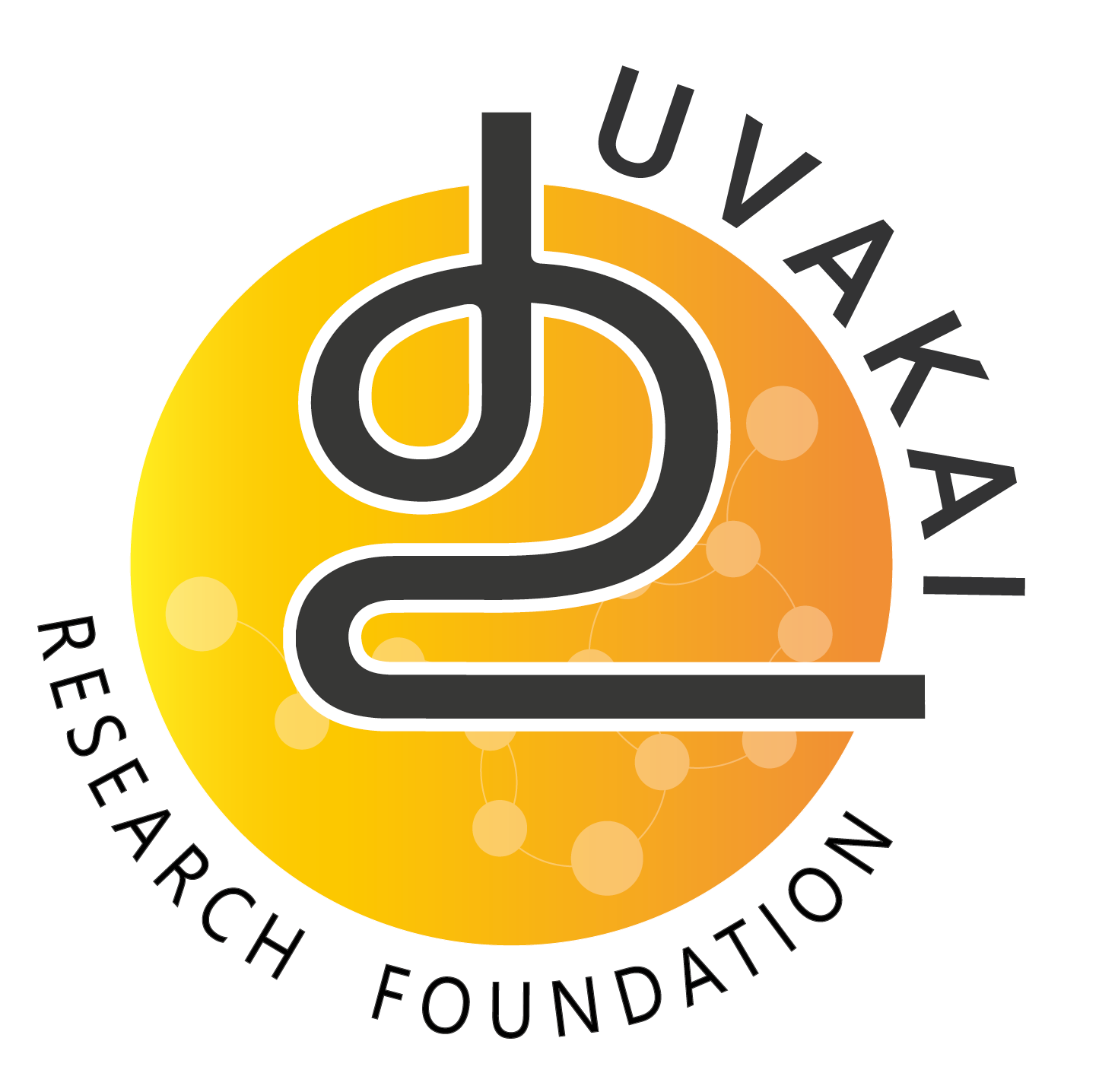
- This event has passed.
𝘼 𝙒𝙖𝙡𝙠 𝘼𝙡𝙤𝙣𝙜 𝙩𝙝𝙚 𝘽𝙪𝙘𝙠𝙞𝙣𝙜𝙝𝙖𝙢 𝘾𝙖𝙣𝙖𝙡: 𝙏𝙞𝙢𝙚 𝙩𝙤 𝘼𝙘𝙩, 𝙉𝙤𝙩 𝙄𝙜𝙣𝙤𝙧𝙚
January 21 @ 8:00 am - 5:00 pm
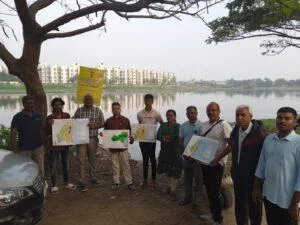

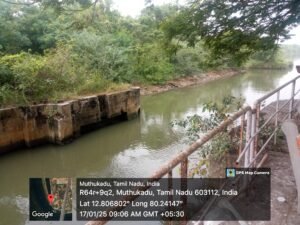

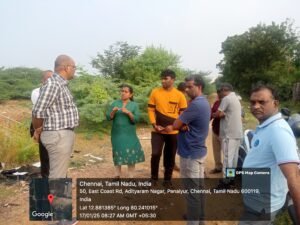
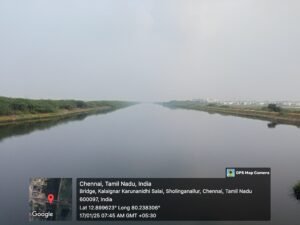


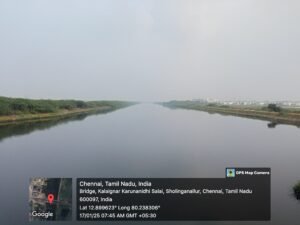

Uvakai Research Foundation recently conducted a transect walk along the Buckingham Canal within the Kovalam basin and its three Chennai catchments. The purpose was to observe, understand, and explore possible solutions to prevent flooding in the Kovalam basin, which heavily relies on the canal for drainage.
𝑻𝒉𝒊𝒔 𝒘𝒂𝒍𝒌 𝒑𝒐𝒔𝒆𝒅 𝒂𝒏 𝒊𝒎𝒑𝒐𝒓𝒕𝒂𝒏𝒕 𝒒𝒖𝒆𝒔𝒕𝒊𝒐𝒏: 𝑺𝒉𝒐𝒖𝒍𝒅 𝒘𝒆 𝒇𝒆𝒂𝒓 𝒇𝒍𝒐𝒐𝒅𝒔, 𝒐𝒓 𝒔𝒉𝒐𝒖𝒍𝒅 𝒘𝒆 𝒆𝒎𝒃𝒓𝒂𝒄𝒆 𝒆𝒗𝒆𝒓𝒚 𝒅𝒓𝒐𝒑 𝒂𝒏𝒅 𝒋𝒖𝒅𝒊𝒄𝒊𝒐𝒖𝒔𝒍𝒚 𝒖𝒔𝒆 𝒊𝒕?
The journey began at the KCG College entrance near Okkiyamaduvu at 6:30 a.m. The early morning view was breathtaking, but as we approached the canal, our curiosity was replaced by a familiar sight—black water and Chennai’s signature smell of untreated sewage.
The Government’s effort to desilt Okkiyamaduvu deserves applause. The breadth and length of the canal gave a fleeting sense of Venice. But the illusion shattered when we saw solid waste dumped over the compound wall of a nearby prestigious apartment into the canal.
At Injambakkam Bridge on Kalaignar Karunanidhi Salai, Sholinganallur, solid waste and sewage water flowed unabated into the canal. In Chennai, stormwater drains and sewage lines seem interchangeable because, functionally, we treat them as one.
Up to the bridge, desilting had been completed, but beyond it, the canal splits around a massive landmass of accumulated silt and sand, stretching to the Muttukadu backwater. Why was this left untouched? Some said the contractor abandoned the work due to cost overruns.
This obstruction delays water flow, prolonging floodwater stagnation in residential areas. With Buckingham Canal as the only exit point for marsh drainage via Okkiyamaduvu, keeping this natural check dam free from obstructions is critical. Why was this part neglected? Could there be technical reasons for this oversight?
The walk ended with four key discussion points:
Spanning 306.27 square kilometers and housing 317 water bodies, (as per the Bhuvan satellite images which require field validation, as Bhuvan satellites classify any area with prolonged water stagnation as a water body), including 63 large lakes above 10 hectares, the Pallikaranai catchment plays a vital role in the hydrological balance of the Kovalam basin.
Should we study the current status and connectivity of these water bodies?
Can we restore or enhance their water-holding capacity to mitigate floods and solve water scarcity?
The concrete-heavy landscape sends vast amounts of rainwater rushing to low-lying areas, choking Buckingham Canal.
Could infiltration techniques reduce runoff?
Apartments and IT corridors could adopt these measures as a first step.
Stringent measures are essential to prevent solid waste dumping within the catchment. Addressing this is non-negotiable.
Should we protect the marshlands, Okkiyamaduvu, and Buckingham Canal now, or wait to spend crores pumping water from one street to another during and after every flood? Development must strike a sustainable balance.
As a community, we are all accountable. We allowed water bodies to be encroached upon, solid waste to pile up, and sewage to flow into waterways. Despite paying taxes, we stayed silent.
Now is the time to wake up and act collectively.
Uvakai Research Foundation is committed to continuing its research and finding practical solutions to reduce water stagnation in residential areas.
Shouldn’t we see this as an opportunity to turn things around, ensuring not just flood prevention but also a sustainable future for Chennai?
Share your views, suggestions and observations to find solutions.
Would you like to be part of this?
Join the Conversation
We invite you to be part of the discussion and contribute to our collective efforts for the Buckingham Canal Restoration. Click the link below to join our WhatsApp group and stay updated on the latest developments:
